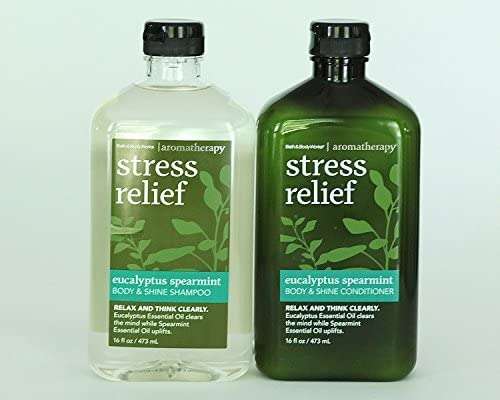Music can have a profound effect on both the emotions and the body. Faster music can make you feel more alert and concentrate better. Upbeat music can make you feel more optimistic and positive about life. A slower tempo can quiet your mind and relax your muscles, making you feel soothed while releasing the stress of the day. Music is effective for relaxation and stress management.
Research confirms these personal experiences with music. Current findings indicate that music around 60 beats per minute can cause the brain to synchronize with the beat causing alpha brainwaves (frequencies from 8 – 14 hertz or cycles per second). This alpha brainwave is what is present when we are relaxed and conscious. To induce sleep (a delta brainwave of 5 hertz), a person may need to devote at least 45 minutes, in a relaxed position, listening to calming music. Researchers at Stanford University have said that “listening to music seems to be able to change brain functioning to the same extent as medication.” They noted that music is something that almost anybody can access and makes it an easy stress reduction tool.
So what type of music reduces stress the best? A bit surprising is that Native American, Celtic, Indian stringed-instruments, drums, and flutes are very effective at relaxing the mind even when played moderately loud. Sounds of rain, thunder, and nature sounds may also be relaxing particularly when mixed with other music, such as light jazz, classical (the “largo” movement), and easy listening music. Since with music we are rarely told the beats per minute, how do you choose the relaxation music that is best for you? The answer partly rests with you: You must first like the music being played, and then it must relax you. You could start by simply exploring the music on this web page. Some may relax you, some may not. Forcing yourself to listen to relaxation music that irritates you can create tension, not reduce it. If that happens, try looking for alternatives on the internet or consult with Counseling Service staff for other musical suggestions. It is important to remember that quieting your mind does not mean you will automatically feel sleepy. It means your brain and body are relaxed, and with your new calm self, you can then function at your best in many activities.
Experiment now. Experience a “sound bath” and let the music carry you away
The links below each open relaxing musical selections in YouTube.
A Moment of Peace Meditation
Aneal & Bradfield, “Heaven and Earth Spirits” track from Life & Love). Lovely contemporary piano music with accompanying instruments and nature scenes.
Echoes of Time
C. Carlos Nakai from the Canyon Trilogy. Serene Native American flute music, with a picture of Nakai backlit by the sun at the Grand Canyon.
The Winding Path
Ken Kern from The Winding Path. Highly rated, beautiful piano music with accompanying instruments with pictures of exquisite flowers and plants.
Classical Indian Music for Healing and Relaxing
Gayatri Govindarajan, “Pure Deep Meditation” track. Lovely and rhythmic music played on the veena, the most ancient of the Indian plucked-instruments, with nature scenes.
Angels of Venice
Angels of Venice from Music for Harp, Flute and Cello. Classical with 3 instruments with nature pictures.
Earth Drum
“Spirit Vision,” (David & Steve Gordon. Serene and lovely contemporary Native American informed-drumming music utilizing Taos Log Drum and Incan Pan along with other instruments and ocean/forest nature scenes.
Buddha Spirit
Aneal & Bradfield from Light & Love. Reflective but strong contemporary music utilizing various instruments and occasional humming voices with colorful oscillating fractals
Spa Relaxing Music
Tranquil contemporary instrumental with piano and a fixed candle light.
Relaxation Music: 1-Hour Meditation Candle
Serene contemporary instrumental with piano and one flickering candle.
Sleep Deeply
Dan Gibson. Nature sounds and instrumental, tranquil sleep music.
Weightless
Marconi Union. The sounds on this video are carefully arranged harmonies, rhythms, and bass lines that help slow a listener’s heart rate, reduce blood pressure, and lower levels of the cortisol stress hormone.
Racked is no longer publishing. Thank you to everyone who read our work over the years. The archives will remain available here; for new stories, head over to Vox.com, where our staff is covering consumer culture for The Goods by Vox. You can also see what we’re up to by signing up here.
During a recent trip to a spa, I observed that nothing throws you off your relaxation groove quite like environmental extremes: This room is too hot, this room is too cold, this pan-flute music is cranked to Metallica-worthy decibel levels.
The last one was particularly puzzling. While not exactly my day-to-day jam, I’d always tolerated that specific combo of pan flutes and nature sounds as just a normal part of the overall spa experience, like those little tabletop pebble fountains or floppy paper slippers. I also figured that was sort of the point: It’s audio wallpaper, aural incense, something that’s there but not intrusive or demanding of your brain space. But faced with something that sounded like a seagull being beaten to death with a rain stick, it occurred to me that if I could no longer ignore it, maybe I should learn something about it.
What is “new-age” music? Where does it come from and why do they keep making it, since it all sounds alike?
First off, what is “new-age” music? Where does it come from and why do they keep making it, since it all sounds alike? Trying to keep a more open, more Zen mind about it, I turned to the experts. It turns out that there are several large labels that specialize in the type of instrumental/nature sounds/chanting recordings that populate spas and yoga studios. Two of the top houses are Sequoia Records, based out of California, and New Earth Records, which has its creative offices in Colorado. Not unsurprisingly, the owners are calm, friendly, and open to answering my questions; no suggestion of East Coast/West Coast rivalries here, no drive-by “sage-ings,” beef tracks, or diva demands.
Bhikkhu Schober, who runs New Earth Records, takes a wide-open approach to the genre, preferring to eschew the name “new age” as tired and limiting. “I wouldn’t call it ‘new age,’ because that term ‘new age’ has been overused and people don’t like it. For me, music, it’s sound,” he says. “I don’t like names on it anymore.” Rather, the company’s website lists music for specific uses, such as Music for Spa and Massage, Music for Yoga, and Music for Reiki.
For a music executive, he’s also uniquely invested in the practice of silence, since he founded the company after spending more than a decade on an ashram in India learning the practice of meditation. “We were looking for music [that] brings people into a state of inner silence and quietness and relaxation,” he says. “We thought that that was needed in these crazy times, and we found our niche there.” This puts their music in a pretty unusual category: Even if you love it, you’re not actually listening to it in an active sense — it’s a tool, a means to end, it’s what you put on when you don’t want to think about what you just put on. It’s music stripped of ego and decree; there’s no empowering message from “Mother Monster” or lighters-out stadium rockers here. Instead, your own silent practice or therapy is supposed to be the star attraction.
“It’s almost like lighting some incense or something.”
Sequoia co-founder David Gordon agrees. He gets that his catalog is probably not something you’d drop onto the turntable during a party or crank up on the jukebox, saying, “It’s not something where you put it on, and like turn it up really loud, and have it be the main focus of what you are doing.” Instead, “It’s almost like lighting some incense or something.”
A trained musician, Gordon developed his approach to the genre naturally. Literally. He began to record nature sounds on hikes with his brother in the early ’80s, which inspired them to take “that stuff into the studio,” where they “started sort of jamming with it, and that was the origin of our meditation music.”
From there, the genre of new age music sort of grew up around them. “There wasn’t really a new age industry at the time,” he recalls. “It wasn’t even really called new-age music. When we first started it, we called it ‘environmental music.’” Over the next few years, the new age movement and its association with crystals, aura cleansing, and other assorted spiritual practices expanded nationwide, and their music for meditation grooved right in. But even some of the central figures of the genre are also on the fence about the label that’s become closely associated with sketchy sweat lodges and expensive kombucha drinks. “A lot of the new age musicians even hate it… They never wanted it to be metaphysical or spiritual, they just wanted it to be nice and peaceful,” he says. “There’s some new age musicians who love the spirituality and the metaphysics of it, and some can’t stand it and wish that they could just be thought of as ambient or something.” Even the term “ambient” puts this genre in another light and places the whole sound closer to the current, more mainstream EDM trend. One of Gordon and his cohort’s biggest influences when creating their early albums was Brian Eno, the electronic music pioneer, who’s worked with sonic powerhouses like David Bowie and Grace Jones — so, not exactly your average drum circle.
Genres aside, Gordon also sees why the music has become intertwined with the beauty and relaxation experience. As he explains it, “Some people go to spas just to relax. But some people also go to them for sort of like healing, where they feel that there is a metaphysical connection. I think it’s a good overlap between spas and the music that they both have those different dimensions.” He does confirm my belief that volume level is a critical component: too loud and you’re jolted out of your happy place; too quiet and you can hear the paper on the table rustle. He advises aiming for the middle path. “It should be at a nice level, and it should be at a level where you can still comfortably talk with your worker.”
Okay, but what if you are the worker? I panicked thinking about the possibilities of working a 9-to-5 that was not only about touching strangers but also meant being surrounded by a soundtrack of what I took to be Celtic monks chanting about dolphins in a rainforest. (One of the many reasons to tip well, IMO.) Here too, the advice of professionals helps.
Massage therapist Kim Gentry of Tallapoosa, Georgia, gently reassures me that to her seasoned ear, “it’s just there” and says it’s occasionally even funny to them. She explains that some songs made her giggle thanks to sheer repetition. Others became hilarious thanks to her coworker. “There’s one guy in particular. He would bust a move trying to make you laugh, and was just difficult when you’re trying to perform a massage and be relaxing.” Now in private practice, she monitors the tunes she plays carefully, less for her own sanity than to make sure that clients can unplug and unwind. “I would say 80 percent of my clients, when we switched our music, would do ‘name that tune.’ It would crack me up.”
“A few are kind of dark instrumentals and they almost sound like they could be in a horror movie. I say these came off the album Music to Murder Your Clients To.”
New York-based masseuse Nancy Richardson says while there are some songs she really likes, she also finds a certain black humor in some of the tracks her spa has selected. “A few are kind of dark instrumentals, and they almost sound like they could be in a horror movie. I say these came off the album Music to Murder Your Clients To.” She adds: “I obviously don’t joke like that to new clients.” Another problem she faces is a tendency to try and figure some of the more obscure choices of the composers.. “One ‘song’ is just waves crashing. Another has music in the background but the predominant sound you hear is what I joke sounds like orcas mating. I want the music at the forefront. If there are some crickets thrown in, I don’t mind. But when what you hear most are animal sounds, it’s not my thing.“ It’s a little annoying to her, but the clients seem relaxed and blissed out, so she’s happy to go along with it.
She also points out that there may be some intense, but not overt, psychological elements to the music that play a role in why it’s such a natural match with spa settings. ”(T)he slow pacing of the melodies, which is believed to induce relaxation, makes it a common-sense, go-to choice.” She’s even explored the idea that there’s a physiological response to sound in her music choices, adding, “I even own a CD (that dates me) called In the Key of Healing by Steve Halpern, which is supposed to lower both heart and respiration rate. It is just music, though.”
As it turns out, she shouldn’t be so quick to dismiss the power of music on the body, since science is actually on her side on this score. According to Dr. Brent Bauer, research director for the Integrative Medicine Program at Mayo Clinic and a medical advisor of industry group the International Spa Association, research is beginning to catch up with what fans of all genres already know — music is good medicine. According to his research, relaxing music and nature sounds, the main components of a lot of new age tunes, may actually have some tension- and pain-relieving properties. “We think broadly about the use of music,” he says. “We’ve done a number of studies with music; one wasn’t so much music as it was nature sounds.” Which means that the sounds of whales flirting might actually be just what the doctor ordered. Or, as he puts it, “just having those things available in the post-operative period led to a significant reduction in stress and anxiety, and even some impact on pain.”
“Just having those things available in the post-operative period led to a significant reduction in stress and anxiety, and even some impact on pain.”
The results of his studies really do seem to suggest that that peculiar combo of pan flutes and noisy birds, while maybe not at the top of your favorite mix, helps you relax and enjoy that pore-cleansing facial or hot-stone massage. Even stripped of the visual elements of spas — the mood-lit rooms, the silk flowers, those posters of fancy manicures or waterfalls — the music seems to win out in Bauer’s studies. So much so that the healing powers of the spa experience are being retrofitted to clinical hospital settings: Mayo now offers massage, nail, and other services to cancer patients and others in an attempt to integrate other forms of support into its treatments.
The practice of integrating the familiar (music) with the more clinical (i.e., medical treatments) seems to show tremendous possibilities. Bauer, however, is quick to relieve my own stress when he explains that I don’t have to face a future of training myself to like the new age stuff that I’d been railing against. ”So many studies, including some we’ve done here, allow patient choice,” he says. “(I)t seems like choosing your own type of music can often enhance the effect above and beyond just, here’s a music intervention.” Which means that it doesn’t have to be all wind chimes and bongos to get the full benefit.
As with most things, it comes down to moderation and choice. Maybe it’s not the soundtrack to your life, maybe it’s not your fight song, but those strange nature/chanting/sacred/electronic music combos seem to be a real practical workhouse for the whole industry. For clients, they’re inoffensive, not distracting, and genuinely seem to have a calming effect on the mind and body, if used properly. (Hint: not Monsters of Rock/earplugs-required loud.) For spa professionals and other therapists, this music can be an actual tool in their practice to relieve everything from everyday tension to serious pain. So why not let go and chirp along?




